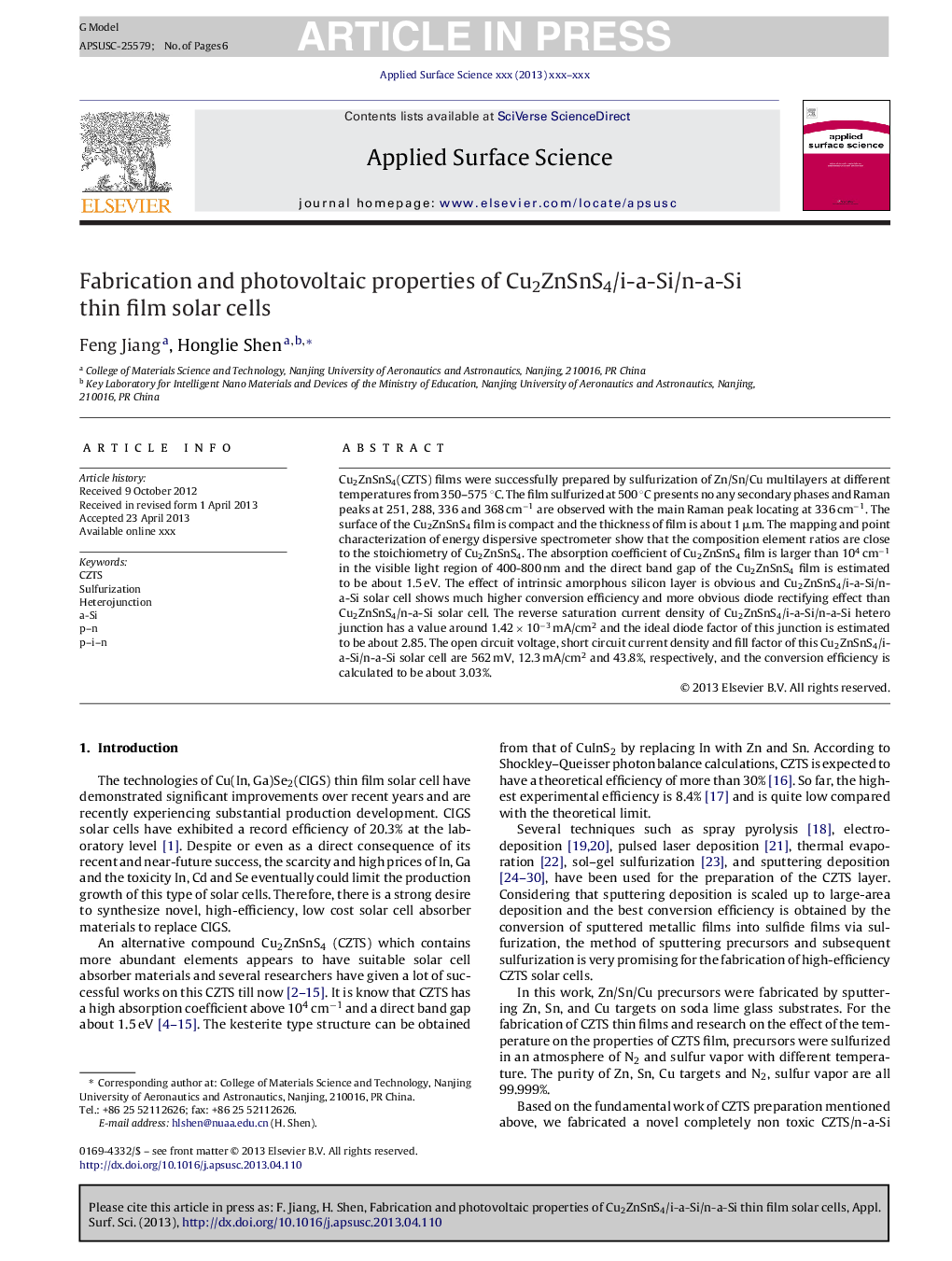| Article ID | Journal | Published Year | Pages | File Type |
|---|---|---|---|---|
| 5352975 | Applied Surface Science | 2013 | 6 Pages |
Abstract
Cu2ZnSnS4(CZTS) films were successfully prepared by sulfurization of Zn/Sn/Cu multilayers at different temperatures from 350-575 ÌC. The film sulfurized at 500 ÌC presents no any secondary phases and Raman peaks at 251, 288, 336 and 368 cmâ1 are observed with the main Raman peak locating at 336 cmâ1. The surface of the Cu2ZnSnS4 film is compact and the thickness of film is about 1 μm. The mapping and point characterization of energy dispersive spectrometer show that the composition element ratios are close to the stoichiometry of Cu2ZnSnS4. The absorption coefficient of Cu2ZnSnS4 film is larger than 104 cmâ1 in the visible light region of 400-800 nm and the direct band gap of the Cu2ZnSnS4 film is estimated to be about 1.5 eV. The effect of intrinsic amorphous silicon layer is obvious and Cu2ZnSnS4/i-a-Si/n-a-Si solar cell shows much higher conversion efficiency and more obvious diode rectifying effect than Cu2ZnSnS4/n-a-Si solar cell. The reverse saturation current density of Cu2ZnSnS4/i-a-Si/n-a-Si hetero junction has a value around 1.42 Ã 10â3 mA/cm2 and the ideal diode factor of this junction is estimated to be about 2.85. The open circuit voltage, short circuit current density and fill factor of this Cu2ZnSnS4/i-a-Si/n-a-Si solar cell are 562 mV, 12.3 mA/cm2 and 43.8%, respectively, and the conversion efficiency is calculated to be about 3.03%.
Keywords
Related Topics
Physical Sciences and Engineering
Chemistry
Physical and Theoretical Chemistry
Authors
Feng Jiang, Honglie Shen,
